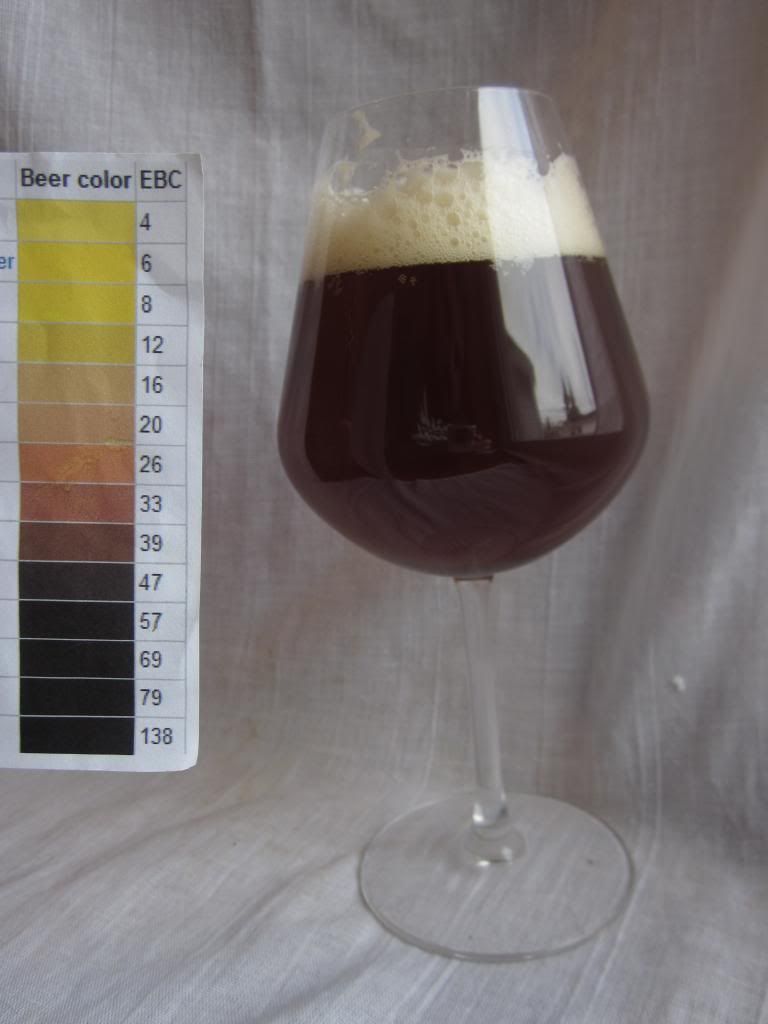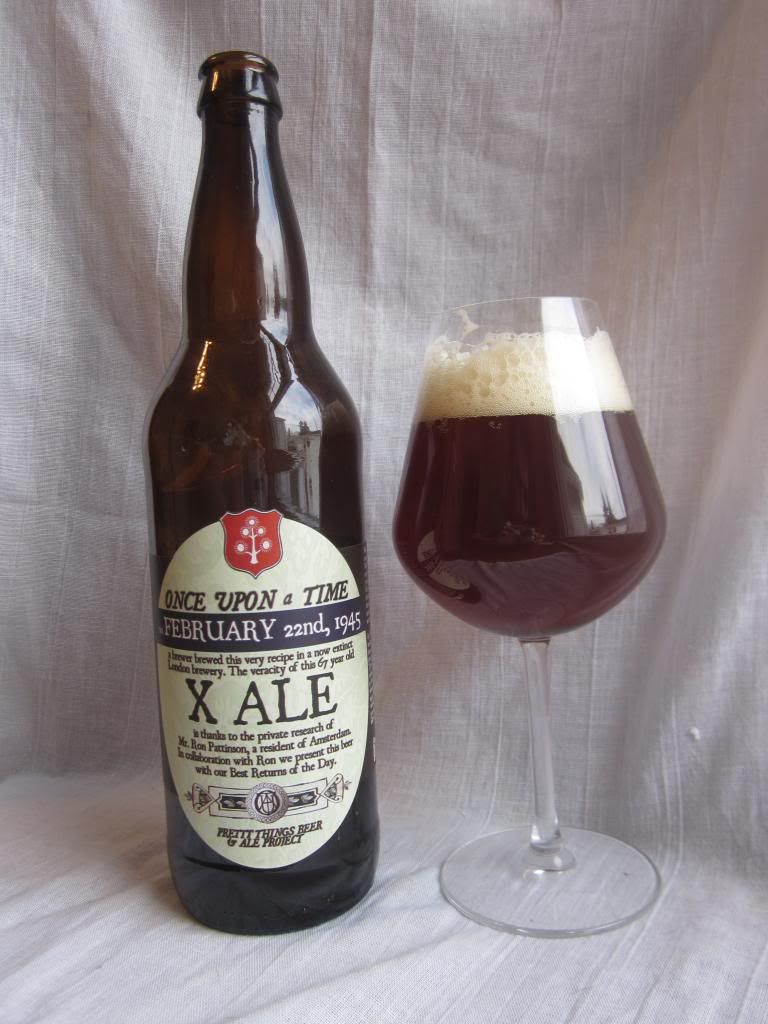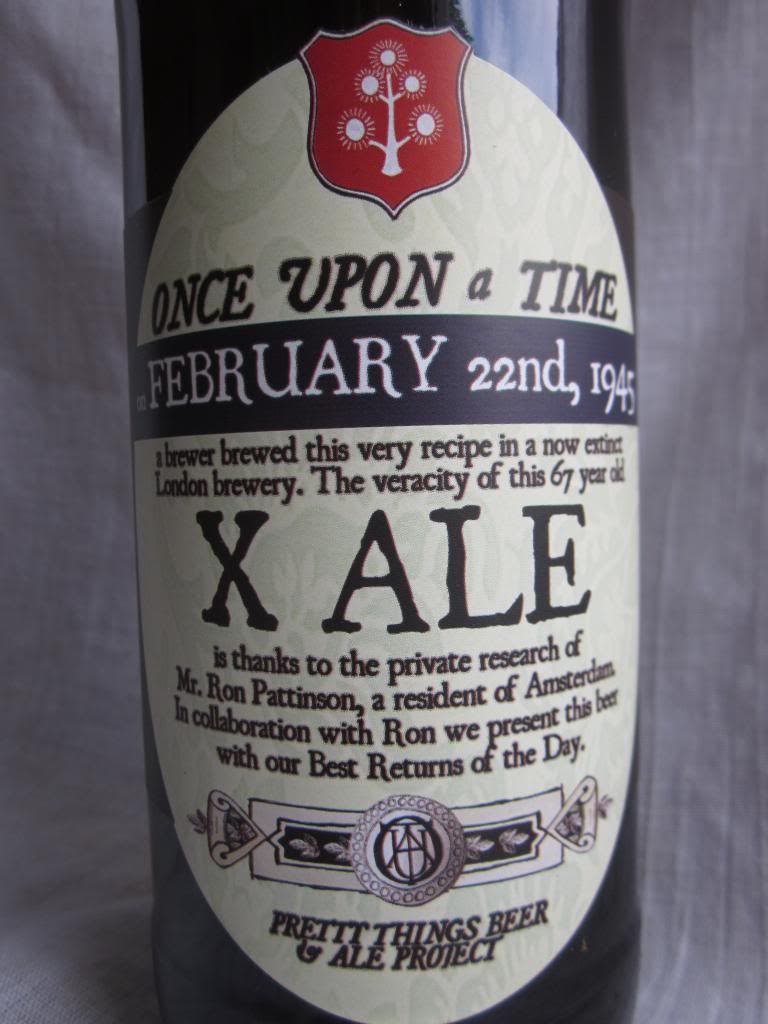Let me first toss out a big ol' "thank you" to my wife who picked up this and several other bottles on a not-so-recent trip to Boston. Normally, I'd never have access to this and I always appreciate something new and different. Another reason I'm stoked to be reviewing this bottle is that it's a style of beer that I am currently unfamiliar with. Zero experience. Nada. Thankfully, Pretty Things does a pretty great job of describing its history right on the label. I shall reprint it here:
"Mild was a hugely popular style for more than a century (1800 - 1900s). Here, we have released two Mild ales side-by-side: two beers from opposite ends of that period, brewed by the same brewery. If you drink both, you will drink the same brand from the same brewery, separated by 107 years. Over those years, Mild changed considerably: something these beers amply demonstrate. Though bearing the same name, X Ale, in character they could hardly be more dissimilar.
By WW II, Mild was firmly established as Britain's most popular style of beer, but the years had not been kind. The wars years in particular had taken their toll on Mild, reducing its alcohol content. There had been other changes too. For example, the colour. 1945 X Ale was much darker, brewed from a blend of 5 malts and dark brewing sugar. Wartime shortages also dictated the use of flaked barley. This 1945 Mild contained just a fifth of the hops of 1838 version. This is Mild as we know it today: a low-gravity, lightly hopped, dark beer. Drink the two side-by-side to see these changes in action.
-Ron Pattinson, January 2012
Also, I would be remiss if I did not include the thank-you note/history located on the front of the label.
"Once Upon a Time on February 22nd, 1945 a brewer brewed this very recipe in a now extinct London brewery. The veracity of this 67 year-old X ALE is thanks to the private research of Mr. Ron Pattinson, a resident of Amsterdam. In collaboration with Ron we present his beer with our Best Returns of the Day.
First batch brewed Feb. 22nd, 1945
This batch brewed Feb 14th, 2012"
First batch brewed Feb. 22nd, 1945
This batch brewed Feb 14th, 2012"
It sounds like each version has its own benefits and while I don't have each one to do a side-by-side comparison I believe that investigating this historically researched brew for myself will be a neat learning experience. Let's pour!
Aroma 8/12
Things are very malty here. This is very akin to a sweet brown ale with cocoa and molasses as the main contributors. A lactose sugar's aroma is also detectable. Overall, this is a very simple bouquet, on par with beers that probably put forth much less effort in their brewing and their historic research.
Appearance 3/3
It certainly lives up to its brewer's name. From the smell I was expecting a much darker pour, but was surprised to see it fall into the glass in a dark copper color, made to seem brighter due to its high clarity. The copper also blends in its share of reds and magentas. Be sure to take a moment to appreciate this one. The head was excellent. It's generous in size, egg shell in color, offers some lacing, and better than average retention. Good work!
 |
| This was the first shot. |
 |
| But this shot showed more true-to-life color. |
Flavor 16/20
As much as the color was a surprise in the glass, the flavor is even more so in the mouth. Things are not at all what one would expect when a bright, clean, citrusy flavor is the first in the mouth. When sipped slowly, lots of neutral malts (crystal?) become apparent as well as a weak, watered-down citrus. The beer is anything but dry at this point and certain to satiate thirst. A quicker drink reveals more flavors, but it turns out that those are merely hiding in the finish as the backbone itself is quite lackluster for big flavors. The finish on the other hand, is the high point of the beer. It reverts back to the sensations in the aroma and gives a nutty, lightly bitter, dry finish with the roasted malts showing through and being a very nice addition. The aftertaste is nothing much to mention other than a gently fading bitter from the finish and eventually a lingering citrus.
Mouthfeel 4/5
A light to medium mouthfeel is here, despite the malt emphasis. The carbonation is abundant, but never comes close to prickly. Instead, it serves as a texture and helps the mouth water through the dry finish. The ABV is invisible and well it should be because further inspection of the bottle shows only a 2.8% ABV!! Great googly moogly! It's a small wonder that Brits could sit down and pound round after endless round with brews like this on tap.
For those not understanding the "great googly moogly" reference.
Overall Impression 7/10
So what's the overall impression? I dig it. It's like a refreshing brown ale or porter, but with much less body and definitely able to be consumed one after another after another. Its shortcomings are the simplicity and lack of other flavors that other brews of this flavor profile have successfully incorporated. Yes, the citrus helps keep things refreshing. Yes, the bitter helps balance the malts while falling far short of overpowering them. However, porter/brown ale flavors like this can also incorporate other flavors like molasses, caramel, dark fruits, brown or candi sugars, cocoa, or dark fruits. I felt this stopped far short of its potential for flavor, even if the purpose it currently serves as a quaffable session ale is a noble one.
Total 38/50
It's difficult to give an unbiased review for this beer because beer has had such varying roles over the decades, let alone in different geographic locations. I'm looking at this brew through "21st century glasses" and it was not made for that time. For the current day and age, this beer feels light in flavor and watered down. Today's priorities in the United States are on monster flavors to compensate for decades of flavorless macrobrews. This results in intense flavors that often require the beer to be sipped and make it far less quenching. Also, this beer is a British recipe. Brits for many years placed a high value on highly sessionable beers because one could drink for extended periods of time and not become intoxicated. Today's drinkers sometimes demand high ABVs in the brews to go along with the potent flavors. It's clear that this beer is from a different century and from a different continent, but does that make it bad? My vote is "no." This is a version of brown ales and porters that provides those flavors in a lighter variation and can still be drank year round. It's not a beer for today's drinker, but I believe that was Pretty Things' idea the whole time. Cheers to Pretty Things for the history lesson on Mild ales, the trip to the past to actually taste one, and the character to not let old beer styles go extinct!


I'm so excited to comment on this.Yah I am talking about delicious beer flavor here it is stylish and good smell
ReplyDelete